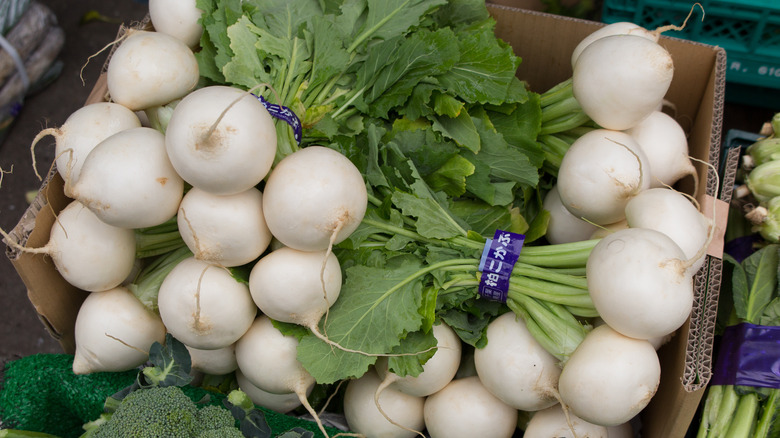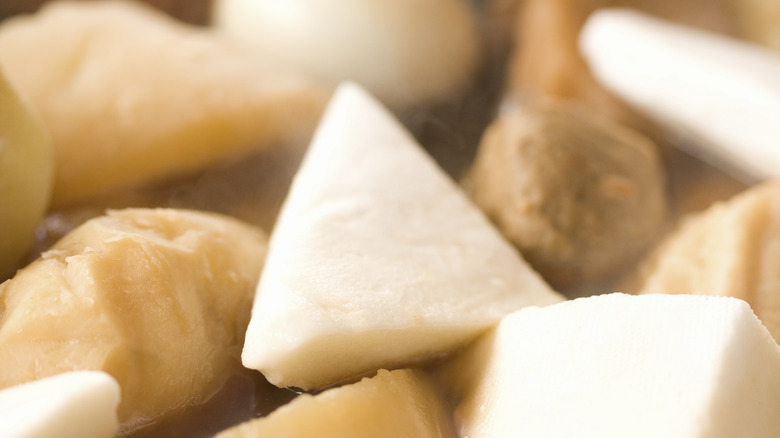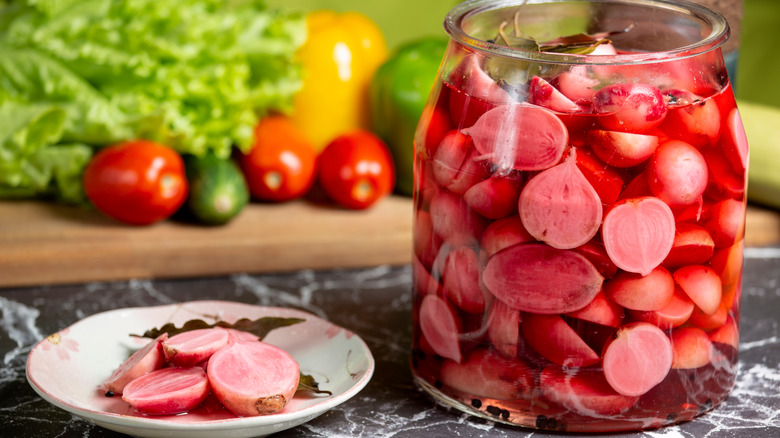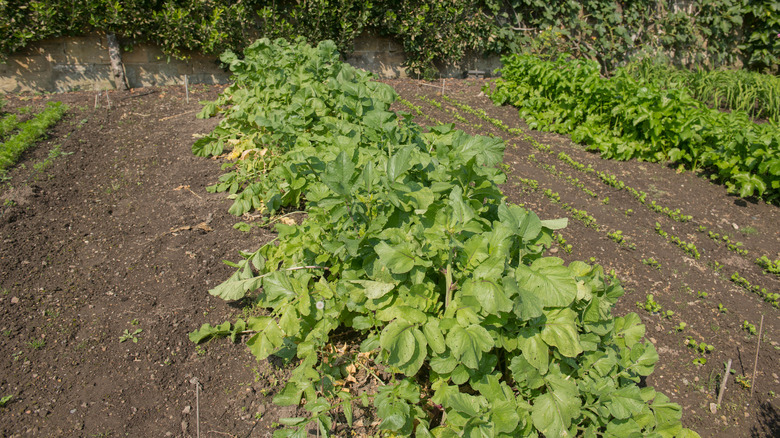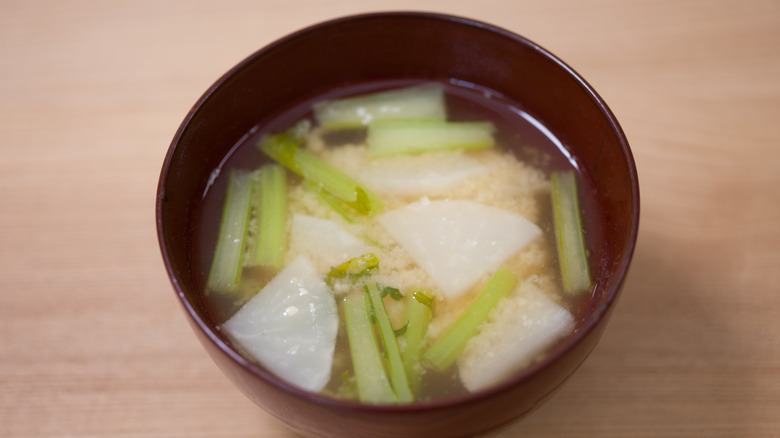What Are Tokyo Turnips And What Do They Taste Like?
Root vegetables include ever-popular pantry staples like potatoes, carrots, and onions, as well as some under-appreciated ingredients. Take turnips, a radish-looking vegetable that has both an edible root as well as leafy greens. While seldom chosen as the star of a dish, the veggie brings unique qualities to the table.
For an especially sweet variety of the plant, seek out Tokyo turnips (Brassica rapa). Also known as hakurei or Japanese turnips, this variety has a nuanced, fruity flavor that can even be enjoyed raw — a unique attribute. Tokyo turnips also do wonderfully when heated, readily melding into seared, baked, pickled, and boiled applications. It's easy to cook their leafy top alongside the root, and together, they offer a breadth of impressive health benefits. Such appealing characteristics make them an ideal introduction to this delicious root veggie. Let's dive into what the flavorful Tokyo turnip is all about.
What are Tokyo turnips?
Tokyo turnips belong to the Brassica Rapa family, a close relative to other vegetables popular in Asian cuisine, such as bok choy and napa cabbage. Also known as salad turnip, this variety resembles radishes more than other turnip types. A newly bred vegetable type, Tokyo turnips only emerged in the 1950s, when Japanese farmers grew them amidst a famine.
The turnips come in bunches, with a white color and a small bulb-like shape. Attached to each root is a long leafy green, which is edible, too. Tokyo turnips are the only variety that can be enjoyed raw, as well as pickled, seared, baked, and more. Tokyo turnips taste sweet, with a mild, slightly fruit-like flavor. However, like cilantro, individuals with a certain genetic makeup may perceive the flavor as bitter. Their exterior skin is edible, too, and does not need to be peeled. Such qualities make them easy to use in the kitchen — let's dive into the details.
How to cook with them
Tokyo turnips are delicious when raw. They are an excellent addition to a crudités platter or can be thinly sliced or grated into salads. In Japan, especially Kyoto, they're commonly pickled in rice wine vinegar, kombu, and chili and serve as a side dish. When they're heated — especially with their greens — their sweetness becomes more pronounced. Simply throw them on the grill or pan-roast them with butter or olive oil alongside greens. With a blanch and a pinch of salt, they'll yield a delicious crispy crust when sauteed. For a less hands-on application, throw the turnips into the oven with a miso glaze.
Tokyo turnips also do well in water-based cooking applications. For example, steam them and then elevate their soft texture with a simple sauce. In Japan, they're also frequently sliced into miso soup or braised into a side dish known as nibitashi. The delicate flavors of the turnip complement a variety of entrees — they need not be the star of the show.
Where to buy Tokyo turnips
Like other root vegetables, Tokyo turnips are in season during winter and fall. They're gaining popularity stateside, so look out for the vegetables at farmer's markets and specialty grocery stores. They can also be purchased online. Those fortunate to have a garden can procure seeds and grow their own Tokyo turnips (they are robust in hot and cold temperatures).
Whenever purchasing Tokyo turnips, look for exemplars with smooth skin and no blemishes. They should feel firm — not mushy — and the state of the greens is an excellent way to gauge their freshness. Accordingto Speciality Produce, Tokyo turnips will store for up to two weeks at 32 degrees Fahrenheit. However, they are more delicate than potatoes and other vegetables, so it's better to refrigerate. Separate the leaves and roots to extend their shelf-life or freeze them to prevent spoilage (even if they're already blanched). However, for optimal flavor, use fresh Tokyo turnip.
Nutritional profile
Tokyo turnips offer some valuable nutritional content. Most prominently, they're filled with vitamin C. The vital nutrient provides a wide array of benefits, from the repair of tissue to the destruction of free radicals and the improvement of cardiovascular health and even skin health, notes WebMD. The root is also great for digestive health, containing an enzyme called diastase. The compound helps break down carbohydrates, easing any stomach discomforts, per Lybrate. Tokyo turnips also offer doses of potassium, fiber, and calcium — other elements also necessary for vital bodily processes.
To get the best nutritional value out of Tokyo turnips, consume both the greens and the roots. The leafy tops provide a large dose of vitamin C, as well as A, K, folate, and calcium. In fact, their nutritional content is similar to spinach, a nourishing powerhouse. So, especially when blanched, this often overlooked turnip part adds a hefty dose of health-promoting compounds.
